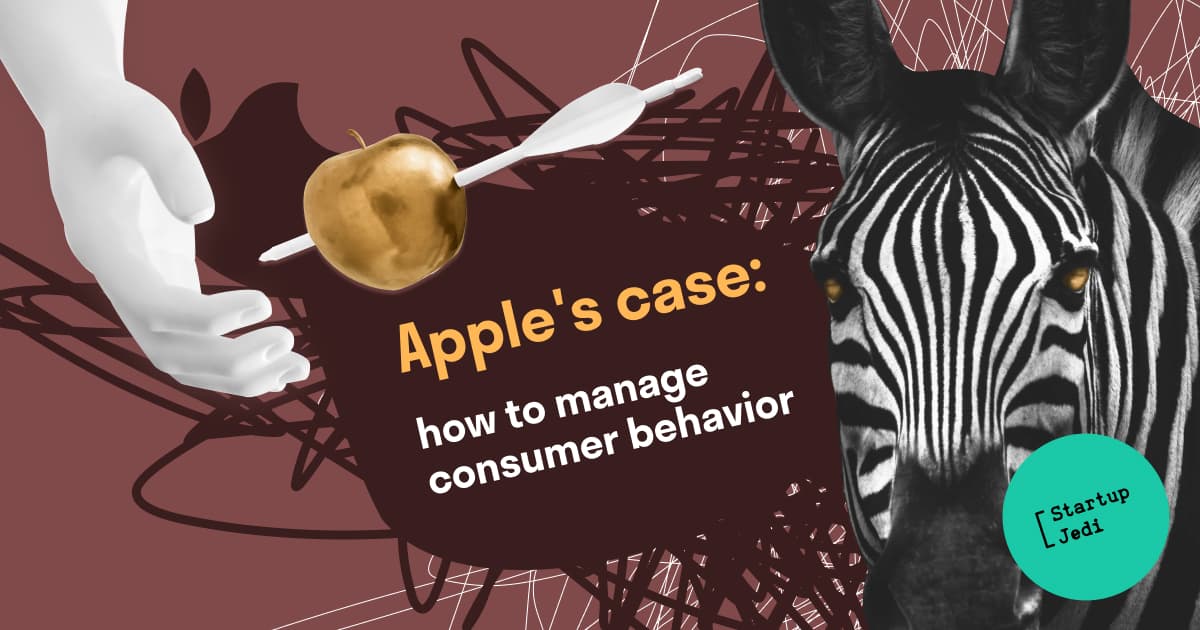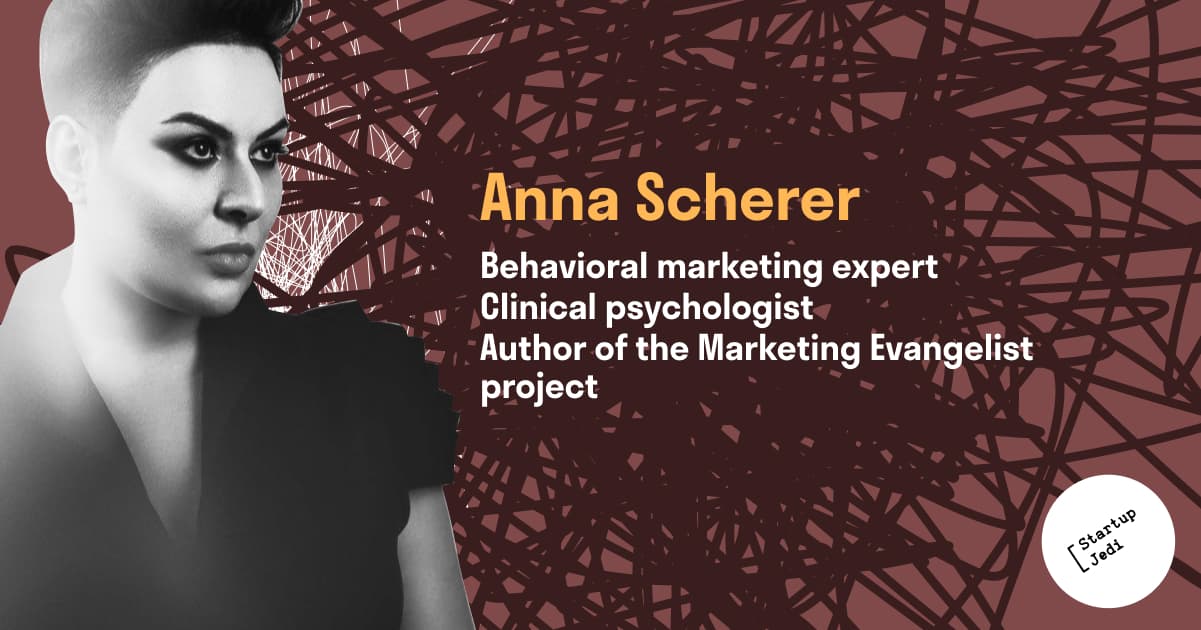
Startup Jedi
We talk to startups and investors, you get the value.
They have not just changed the world, they taught us to dream, believe in ourselves and pursue the goal regardless of anything, Apple is a beacon in the world of entrepreneurs, a peak that everyone dreams of approaching. Innovative technologies, a non-standard solution, a product brought to perfection - it may seem that today we know everything about Apple’s success formula. If so, why has no one succeeded in repeating this giddy success? Perhaps there is something else, a fifth element hidden from the eyes of the majority?

Startup Jedi
We talk to startups and investors, you get the value.
Remember that famous dialogue from the Steve Jobs movie that actually took place between two former friends, Jobs and Wozniak? Where Steve, an engineer, could not understand what the other Steve, who is not a designer, not an engineer, not a programmer, who cannot even hammer a nail, does?
The good Steve’s attitude is understandable and sympathetic. Wozniak was what they call a geek, a man who’s crazy about his developments, meticulously understanding hardware and its details. It was iron with its features that completely occupied his interest, he worked hard on its modifications and improvements, accelerating and bringing the technique to its maximum capability. Today, we would call it fixing potential consumer’s pain points.
To be honest, Steve Wozniak did not think about the consumer at all. For him, a guy from Silicon Valley, such a concept simply did not exist: everything that Wozniak did, he did for himself and for people like him, the guys from the valley. Today, we would say that Wozniak possesses this very production mindset that is aimed at developing technology for the sake of technology.
It is the technology and everything that has to do with it that occupies the minds of modern development teams working on the creation of the next project, which, according to its authors, will blow up the world. To bring the product to sterile perfection, to its maximum capability — all of this is of paramount importance for those who can be called the followers of the good Steve and his production mindset.
Thinking like a production worker means looking at a product from the point of view of its physical properties and characteristics, being in love with the product, not noticing its problems and flaws, naively believing that the consumer will love it as much as you, the creator, do. The production mindset is the dividing line, the line that separates the development team from the value creation team, creates a connection between the product and the consumer. We call this marketing.
...

It was Steve, aka bad Steve, aka Jobs, who created value. Value is something that invisibly connects the consumer and the product, activates consumer’s attention and attracts them to the product. It engages, turning an ordinary client into an evangelist. And yes, value is something that remains beyond the material world, something that is almost impossible to see with the eyes. Yet, it invisibly controls consumer behavior, creating quite a tangible profit for the company.
The company’s profit and the success of the project directly depend on whether the customer sees the value of the product. By value, we mean the implicit, psychological motivation of the consumer, as well as the explicit, material need for some real product. It is important to note that all successful and profitable projects have this very combination and in this very sequence: the psychological need comes first, and only then it is transformed into product value. To be precise, it is the irrational value that determines the material one.
Thus, many naively believe that Apple owes its success to its intuitive interface and excellent design, and this is a key mistake. In a behavioral approach, we call this false insight. Insight is a hypothesis that implies why the consumer purchases a product. Accordingly, false insight is a hypothesis that erroneously determines the true motives of consumption, leading to project failure. By the way, according to statistics, it is false insight that becomes the №1 cause of the death of most startups.
In the situation with Apple, the true motive for the company’s success was its “why”, the very implicit value that Jobs laid down by making the computer company a symbol of rebellion, defiance, overthrowing the status quo, established traditions and rules. Contrary to popular belief about the true origin of the logo, apple is the very biblical symbol of discord and disobedience, which is embedded deeply in our collective unconscious, which, of course, Jobs was well aware of.
The importance of Jobs’s value and contribution to Apple’s success can be easily disputed, which does actually happen, and the scene from the film is a direct confirmation of this, not to mention firing him from his own company. And if its collapse after the departure of Jobs and the rise with his return can be attributed to random events, this is by no means possible with the discoveries in the field of affective neurobiology.
...

It was affective neuroscience that made it possible to understand and evaluate the contribution of value and its impact on consumer behavior and decision-making algorithm.
So, according to scientific research, value is nothing more than a connection between a brand, its product and a potential consumer; it is a kind of emotional bridge between you and the client. It is value that drives the selection process, being a kind of beacon for the client, attracting their attention and distinguishing the product from competitors. It is the value and its visual image, the very apple in the logo, that is an emotional trigger activating consumer behavior, which is especially important in a situation when a brand or product is just entering the market, because in this case, unlike their silent counterparts, the company already carries a message that interacts with potential clients.
It should be said that the presence of implicit value is the only way of effective advertising communication in digital reality, where the amount of advertising has reached the limit of human ability to process it. Thus, it takes about 1 millisecond to view one advertising banner, meaning only the unconscious, a structure that is called System 1 in behavioral economics, can process information in such a short time period.
Now let’s talk about the role of value in the purchasing decision process. The decision-making algorithm is as follows: anticipation of pleasure — fear of punishment = purchase, where anticipation of pleasure is value, and fear of punishment is pain. Accordingly, the greater the subjective value of the product, the less pain plays a role and the more likely it is that the purchase decision will be positive.
When we speak about objective value of the brand, we refer to the brand itself, the subjective perception of this brand, its recognition, as well as the social significance of the brand: what attributes the brand endows its owner, what message it sends to society due to the presence of this product, as well as product value in the form of a certain function performed.
Pain includes the cost of the goods as well as physical and mental inconveniences associated with the purchase, delivery, use of applications, contact with the staff of the point of sale, and so on.
Thus, it turns out that there are two ways to manage consumer behavior: increasing value and decreasing pain.
By the way, value not only influences the purchasing decision, but further determines the so-called customer experience, or CX. So, without value, the slightest flub on the part of the purchased product will be regarded as pain, thereby accumulating negative experience, which, as soon as it exceeds the subjective value of the money spent, will form a decision to avoid repeated contact with the company and its services. Conversely, having a solid supply of value, the client easily forgives the company for minor mistakes.
- “I play the orchestra” … that was Steve Jobs’s answer.
For a project to become successful, you need to be Steve Jobs, someone who knows how to create true value for their consumer, how to clothe it in material form, define the appearance of the product and communication through which value will be conveyed so that it can be heard. Someone who knows how to create real music.
...

Anna SHERER is a clinical psychologist and psychotherapist. Her professional interests include applied psychology, namely behavioral marketing and clinical management approach.
She’s the author of the Marketing Evangelist project — the avant-guard of marketing and advertising, where scientific developments in the field of neuro and behavioral sciences are transformed into pragmatic business solutions.
She’s also the CEO and Marketing Director of Yohji Yamamoto perfumery, UK. Anna restarted the perfumery direction of the fashion house internationally, did the rebranding and launched several new perfume lines after a long absence of the brand on the market.
Anna is the marketing director of her own brand L’Etoile, she created and managed the largest private label in the Russian perfumery and cosmetic market.
Facebook: facebook.com/StartupJedi/
Telegram: t.me/Startup_Jedi
Twitter: twitter.com/startup_jedi
Comments